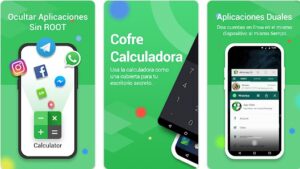LivePortrait is an innovative platform powered by artificial intelligence (AI) that allows you to animate static portraits in a strikingly realistic way. Using advanced algorithms and deep learning techniques, the tool converts simple photos into videos with natural movements, such as facial expressions and gestures. In this article, we will explore in detail how to use LivePortrait, the steps involved, the benefits for different industries, and some limitations. If you want to get the most out of this powerful tool, read on.
What is Live Portrait?
LivePortrait is an AI animation tool that brings photos to life. Developed by Kuaishou Technology and in collaboration with renowned universities such as the University of Science and Technology of China and Fudan University, it is differentiated from other animation tools by its ability to produce realistic facial movements from a single static portrait. LivePortrait’s technology includes the use of an implicit keypoint-based framework that allows it to detect and generate movements of eyes, mouth and facial gestures.

Additionally, LivePortrait allows you to control specific aspects of animations such as blinking, smiles, and lip movements. This makes it a popular choice for content creators, filmmakers, educators, and even advertisers who want to incorporate animations into their campaigns.
Step by Step Tutorial: How to use LivePortrait?
Below, we guide you step by step on how to use LivePortrait to animate your photos:
Step 1: Access the Platform
You can access the tool by visiting its official website or through associated platforms such as LivePortrait. Some versions of the tool are also available on platforms such as D-ID or GoEnhance, which offer similar functionality.
Step 2: Upload your Photo
Once on the site, look for the button that says “Upload Image” or “Upload Image”. Here, you can upload the photo you want to animate. The image can be a personal portrait, an artistic photo or even a historical image. The platform accepts various file formats such as JPEG and PNG.
Step 3: Select a Reference or Motion Video
For AI to animate your image, you need a reference video to serve as a basis for facial movements. In some cases, you’ll be able to select a pre-existing video from the tool’s library, or upload your own video to further customize the process. The video guide gives the AI the necessary information about how the eyes, lips, and other facial expressions should move.
Step 4: Precision and Parameter Settings
After selecting the reference video, the platform allows you to adjust some specific parameters of the animation. For example, you can control the level of detail in eye movements, lips, and other facial features. This stage is key if you want a higher level of realism or if you have a specific creative vision.
Step 5: Process and Generate the Video
Once you have configured all the parameters, click on the “Generate Video” or “Process” button. The system will take a few seconds or minutes to process the animation depending on the complexity of the reference image and video. LivePortrait is known for its speed and efficiency, generating results quickly thanks to its AI-optimized engine.
Step 6: Download or Share the Result
When the animation is complete, you can download the resulting video to your computer or device. Many partner platforms also allow you to directly share the video on social networks or use it in multimedia projects. Depending on the site, some versions allow exporting in MP4 or other formats compatible with video platforms.

Benefits of Using LivePortrait
LivePortrait is an extremely versatile tool that has applications in several industries. Below are some of the most notable:
Content Creators and Influencers
For those creating social media content, LivePortrait offers an innovative way to personalize avatars and generate engaging videos from static photos. You can bring your images to life, making them more attractive and likely to generate interactions on platforms like Instagram, YouTube or TikTok.
Filmmakers and Animators
In the film and animation field, LivePortrait is a valuable tool that allows filmmakers to save time creating facial animations. Since the tool is efficient and precise, it can replace the manual work of character animation, significantly speeding up production processes.
Marketers and Advertising
Marketing and advertising teams find LivePortrait an ideal solution for creating dynamic ads. By animating static images, advertising campaigns become more eye-catching and can better capture the audience’s attention. Additionally, the ability to customize facial expressions allows ads to be more relatable and emotional.
Education and E-learning
In the educational field, LivePortrait can be a transformative tool. E-learning content developers can use animated portraits to make lessons more interactive and entertaining. For example, teachers can create historical figures who speak directly to students, making classes more immersive.
Video Game Development
Video game developers can also benefit from LivePortrait by creating more realistic non-playable characters (NPCs). NPCs can display emotions and facial reactions in real time, which enhances the gaming experience for users.
Limitations and Considerations
Although LivePortrait is a powerful tool, it has some limitations that users should be aware of:
Image Quality
The final quality of the animation depends largely on the resolution and clarity of the original photo. Blurry or low-resolution images can produce less accurate animations.
Animal Animation
Currently, the platform is focused on human portraits. Animal animation is not available, although future updates are expected to include this functionality.
Cost
Some advanced versions of the tool require additional subscriptions or fees, especially if you want access to premium features like longer videos or high-resolution exports.
Future Upgrades and Potential
With the rapid advancement of artificial intelligence and deep learning, LivePortrait is expected to continue improving its capabilities. Future developments could include the ability to animate objects or animals, as well as improvements to the customization of movements and facial expressions. In addition, new tools could be added that integrate real-time audio, allowing characters to speak directly from photos.
Conclusion
LivePortrait is one of the most advanced and accessible tools for animating still photos. Its ability to generate realistic facial movements, combined with its ease of use, makes it an ideal choice for a wide range of users, from content creators to educators and filmmakers. With its speed, precision and creative possibilities, LivePortrait is revolutionizing the way we interact with images and videos in the digital age.
